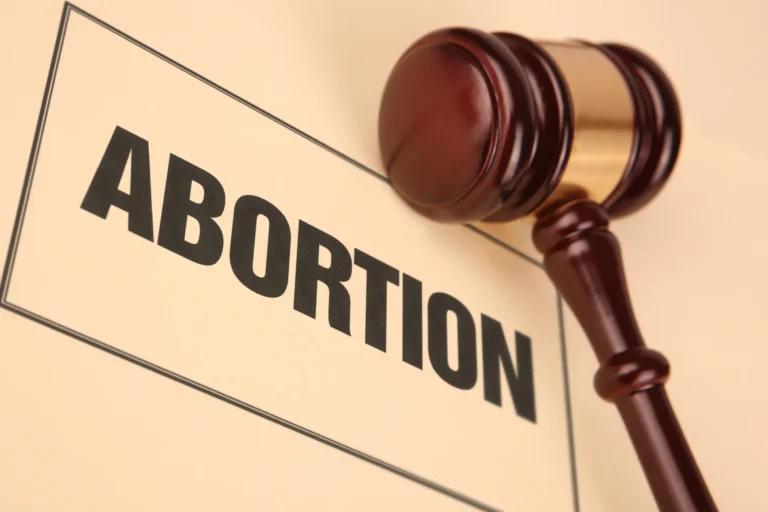The birth rate in the United States is still falling and with no end in sight. Even despite robust economic growth and low unemployment over the past two years, the birth rate has not picked up. Why is this happening?
In part I of this article series, we discussed the economic reasons why Americans are having fewer children. The rising costs of raising a child, the rising costs of a college education, financial uncertainty, and the disproportionately heavy effects of the Great Recession on Millennials are all important reasons for why births have continued to decline.
But there are also deeper cultural reasons that explain why the birth rate continues to fall. Aside from economic and financial concerns, the birth rate is also falling due to changes in the demographics of the marriage market, declining marriage, and changes in cultural attitudes towards marriage and having children.
Declining Marriage and Marriage Deferred
For one, fewer adults are getting married now than ever before. While nearly three-quarters of American adults over the age of 18 were married in 1960, today only about half of adults are married.
For at least the past 15 years, the percentage of young adults under the age of 35 who are single, unmarried and unpartnered has been steadily rising. This trend has been particularly pronounced for young adults in their twenties and late teens. The rise in singledom among adults under 30 is almost entirely due to a decline in marriage in this age group.
Young adults these days are also delaying marriage more than past generations did. In 1975, the median age at marriage was 23.5 for men and 21.1 for women, according to the U.S. Census Bureau’s Current Population Survey. Fast-forward to 2018 and the median age at marriage has risen to 29.8 for men and to 27.8 for women.
The practice of postponing marriage has a potent depressing effect on the birth rate as it decreases the fertility window in which a husband and wife can have children. The later couples wait, the fewer children they are likely to have. Add on top of this the fact that having children becomes considerably more difficult after their late thirties.
Marriage also has immense benefits for both parents and children by providing both relationship stability and financial stability, benefits which make it easier for couples to have children. As such, the birth rate is considerably higher among married women than it is among unmarried women.

While the birth rate is increasing for married women, it apparently has not yet been enough to cause the overall birth rate to rise. According to Lyman Stone and W. Bradford Wilcox at the Institute for Family Studies, the recent rise in the marital birth rate is not necessarily an indication that married adults are having more children overall. Rather, the recent rise in the marital birth rate is likely due to the relatively large Millennial cohort entering their prime marrying years and first years of marriage. And because newly-wed couples have much higher birth rates than couples who have been married for a while, the birth rate is increasing largely due to a relatively large cohort of newly-weds.
Why are adults these days waiting longer to get married?
For one, far fewer young adults these days are able to get married because of the financial and economic stresses they face. According to a Pew Research Center survey, 68% of never-married adults say they haven’t tied the knot yet because they are not financially stable enough. Among adults in their prime marrying-age years (between the ages of 25-34), lack of financial readiness is the number one reason they cite for not being married yet.
But there are also other important reasons why fewer young adults are marrying. According to the same Pew Research Center survey, 72% of young adults who want to get married someday said they have not married yet because they have not found the right person and 54% of young adults said that they were not ready to settle down yet.
The Changing Marriage Market
Indeed, it is becoming increasingly difficult for many young adults to find suitable partners. For women, the pool of eligible marriable men is shrinking while the pool of marriable women is growing.
According to a survey from the Pew Research Center, 71% of women say that it is very important for a husband to be able to support his family financially. However, the percentage of young men 25-34 years old who are employed is at near all-time lows, according to employment data from the Bureau of Labor Statistics. While young male employment has risen from the lows experienced following the Great Recession, the percentage of men currently employed is near the level it was in 1983, which, prior to the 2007 recession, had previously been the all-time low point for young male employment. Meanwhile, the percentage of young women in the workforce is now at a near all-time high.
But it’s not just that fewer young men are employed in today’s economy. Young men are also making less money than they used to.
In 1979, young men 25-34 years of age on median earned about $1,020 per week (in terms of 2019 inflation-adjusted dollars), which is roughly the equivalent of an annual salary of $49,800 in 2019. By 2018, young men’s weekly earnings dropped to only $862 per week, the equivalent of an annual salary of only $44,900.
By comparison, wages for young women 25-34 years of age have been rising. Young women’s inflation-adjusted median earnings are higher today than they have ever been. And while there still is a noticeable gender wage gap, the wage gap between young women and young men is narrower now than at almost any other time in history.
While the shrinking gender gap may be a good thing for women’s equality and earning potential, it may also be inadvertently limiting some women’s marriage options. Many Americans (both men and women) believe that a husband should make as much as or more than his wife.
According to the results of a 2011 World Values Survey, 10.4% of male respondents and 14.3% of female respondents in the U.S. believe that it is problematic for women to make more than their husbands.
A study conducted by Marrianne Bertrand, Emir Kamenica, and Jessica Pan shows that men and women in the U.S. often appear to select marriage partners where the man makes more than or about the same as the woman. The authors of that study found that increases in women’s average earnings compared to men’s earnings accounts for approximately 29% of the decline in marriage over the past 30 years. The trend, however, has been driven almost exclusively by Americans with a high school education or less as Americans with a college education are less likely to consider a husband’s higher earnings to be important.
The convergence of young women’s rising income, men’s declining income, and cultural beliefs that the man must make more than his wife have created roadblocks for young people to get married. Women seeking to marry-up in terms of income are seeing their options diminish.
The availability of stable, good-paying jobs for young adult men with less than a college education has dwindled in today’s information-based economy. In generations past, men could expect to attain a middle-class livelihood by working relatively good-paying, stable manufacturing and manual labor jobs with little more than a high school diploma, on-the-job training, and a can-do attitude. Today, there are very few good-paying jobs available for people without a college degree. Young adults with less than a four-year college degree have seen their real earnings decline over the past two decades.
And while young adults with a Bachelor’s degree or more have fared better, wages for young adults with at least a four-year degree have not increased very much from what they were in the early 2000s.
Women are also now outpacing men in attaining four-year college degrees and graduate and professional degrees. In 2017, 55% of adults between the ages of 25-34 years who had a Bachelor’s degree or postgraduate degree were women while only 44% were men. The education gap between men and women has reduced women’s options for finding a suitable partner with a similar level of educational attainment. According to Pew, women are slightly more likely to rate being well-educated as a very important characteristic for a partner to have when looking for a spouse. Additionally, well-educated adults with a Bachelor’s degree or higher place more value on finding a partner who is also well educated.
Difficulty Pairing Up
The way young adults forge relationships today is quite different from the ways previous generations met their spouses. Couples who met during the 1940s most often met through friends, family, as neighbors, or at school. Couples who met during the 1980s and ‘90s most often met through friends and family as well but also often met as coworkers, at a bar, in school, in college, or at a party. However, studies have found that young adults today most commonly meet their romantic interest online or at a bar.
Many couples today meet as strangers and have little to no connection to the other partner’s social support circles. Breakups are more likely for online daters, as some studies have shown, possibly due to less involvement and support in the relationship from family, friends, church, or the local community. Online daters may also feel they have more options in the dating market and may be less attached to their romantic partner than couples who meet through friends, family, or co-workers. The increased frequency of pairing up and breaking up could also be contributing relationship fatigue for some who simply put off dating altogether.
The way young adults today maintain friendships has also changed with the advent of technology and social media. Many adults today meet up less often with friends in person than in the past. Studies have shown that greater use of social media is linked with feelings of loneliness and depression.
As a recent YouGov survey revealed, nearly one third of Millennials say they often feel lonely. Millennials are more likely than Generation Xers or Baby Boomers to feel lonely or say that they have no friends or close friends. Without close friends and with less frequent face-to-face contact with friends as in past generations, it is little wonder then that young adults today find it difficult to meet people and find a marriage partner.
Changing Attitudes Towards Marriage
Many young adults today are more cautious about entering marriage than previous generations. While many adults in past generations saw marriage as part of a journey in which spouses accompany each other through life’s ups and downs, today’s young adults are more likely to view marriage as a capstone achievement, one that is attained only once all their other life goals have been set in order. Having experienced the Great Recession first-hand early in their careers, many young adults are keenly aware of the difficulties that come with financial instability. Many young adults want to be more financially secure before entering marriage and having children to safeguard themselves against the financial adversities they, their friends, or their siblings may have experienced early on in their careers.
But fewer adults may also be getting married today as well because the importance given to marriage has changed in the minds of many young adults. According to a survey from Gallup, the percentage of adults who believe that marriage is important has declined. Fewer Americans today believe that marriage is important if a man and a woman decide they want to spend their lives together and fewer believe that it is an important prerequisite for deciding to have children. According to a survey from the Pew Research Center, the percentage of Americans who consider marriage and children as priorities in life are in the minority, with 50% of Americans believing that it is ok to have other priorities in life.
Additionally, the percentage of never-married adults who want to get married someday has declined as well.
Young adults’ desire for marriage may decline more in the future as young adults are far less likely than older adults to consider marriage important. According to Pew Research Center, while 65% of adults over the age of 65 consider marriage as very important, only 36% of young adults in their late teens and twenties consider marriage as very important. And never-married young adults under the age of 34 are more likely than never-married adults in any other age group to say that they do not want to ever get married.
Declining Church Attendance and Religiosity in America
Another cultural factor that may be causing the birth rate to drop is declining church attendance and religiosity among American adults.
In the U.S., those who place high importance on religion tend to have more children on average. A study using data from the 2002 National Survey of Family Growth (NSFG) found that women who considered religion to be “very important” had more children on average (2.3 children) than women who considered religion to be “not important” (1.8 children). Women in their early 20s who place high importance on their religion also desired to have significantly more children than -religious women did.
Americans who attend church services frequently also tend to have more children on average. Another study, also using data collected from the 2002 NSFG, found that American women are 28% more likely to have at least two children if they attend religious services regularly. Religiosity appears to be a predictor of higher fertility.
Unfortunately, the percentage of Americans who practice their religion is plummeting. According to a recent report from the Pew Research Center, attendance of religious services in America is falling. Over just the past 12 years alone, the percentage of Americans attending religious services at least once a month has slipped from 54% down to only 45%. Many Americans are abandoning faith altogether. Americans without faith who describe themselves as either atheists, agnostics, or non-religious have grown from 16% of the U.S. population to 26% over the past 12 years.
In Conclusion
There are many reasons, both economic and cultural, behind America’s falling birth rate. In order to bring the birth rate back up to a sustainable level it will be necessary for society to address a wide range of issues impacting young adults. But it will also be equally important for Americans to reprioritize their values and put family ahead of personal goals and career.
Updated 1/16/2020 to include the following info graphics: “Employment-Population Ratio: Men, 25-34 yrs.” and “Median Usual Weekly Earnings: Comparing Men and Women, 25-34 Years of Age”








